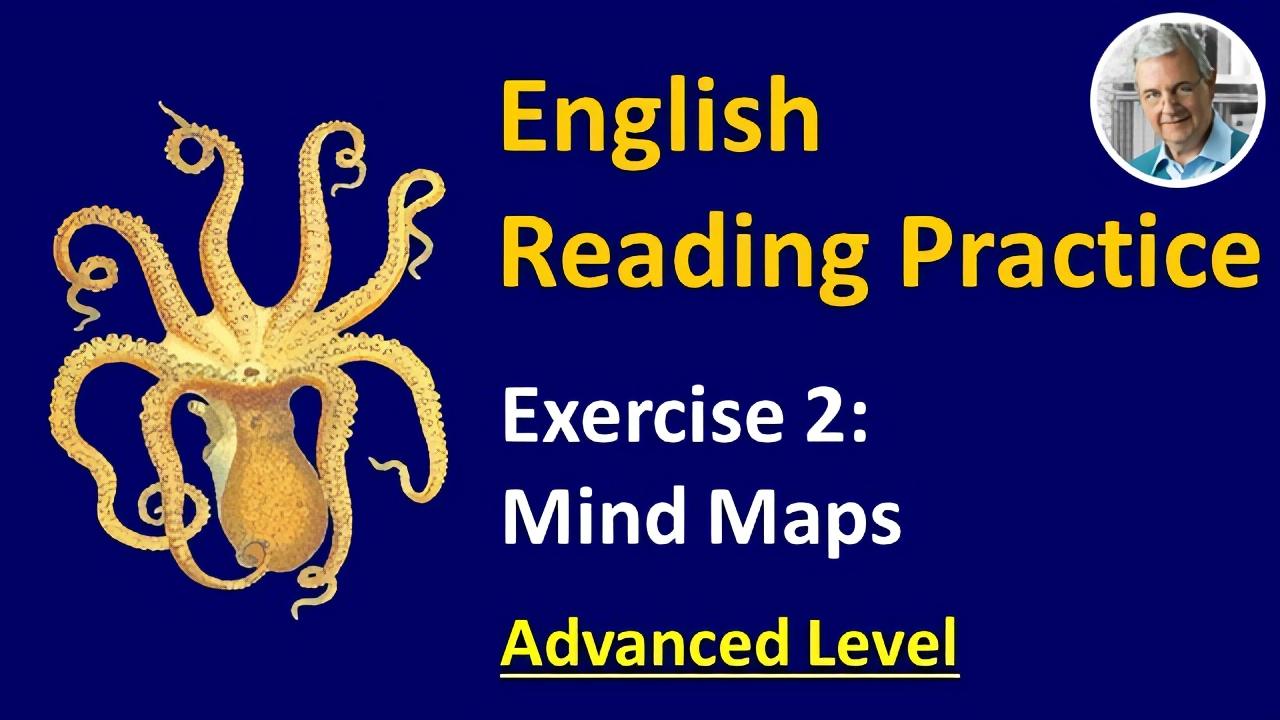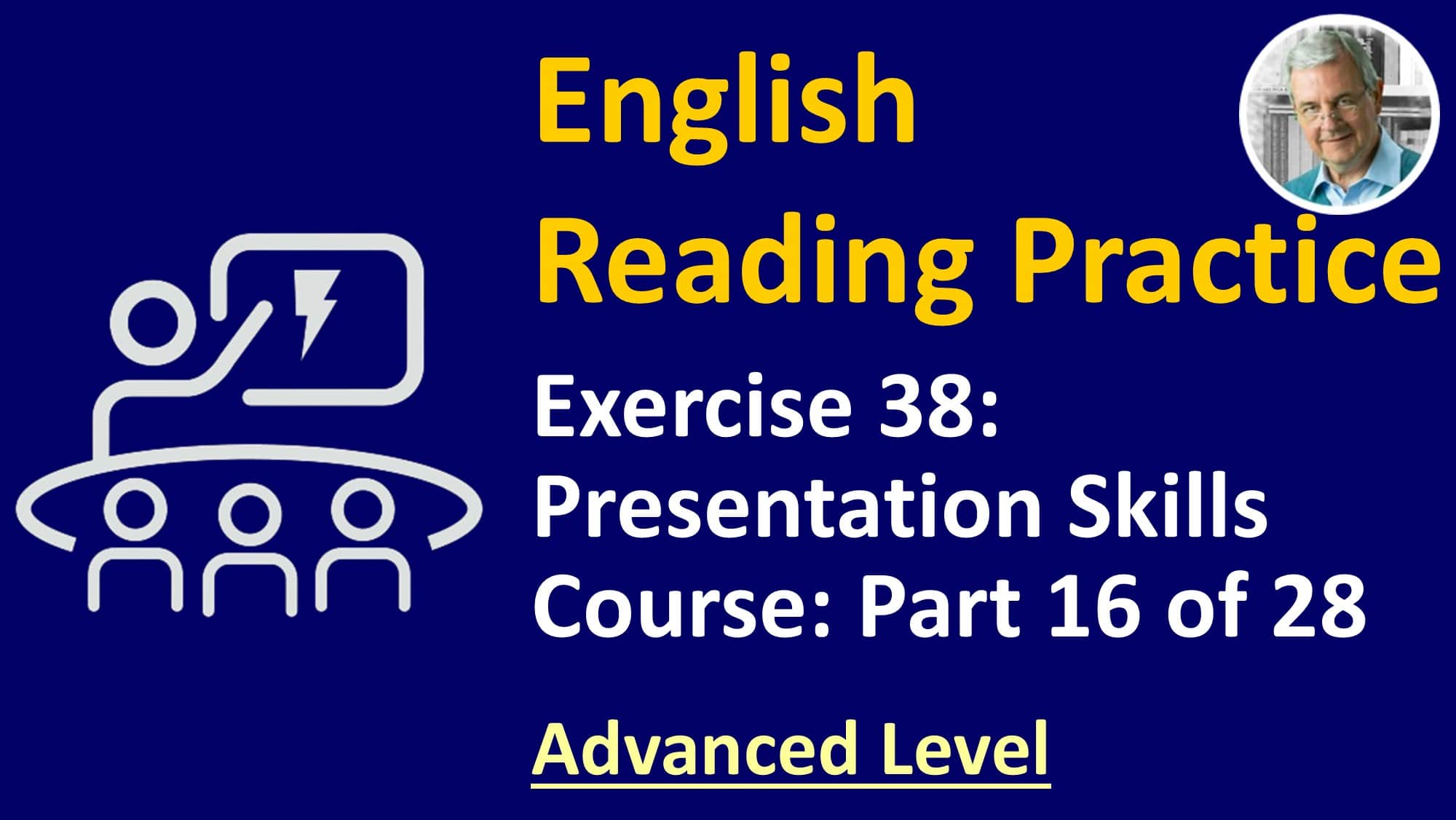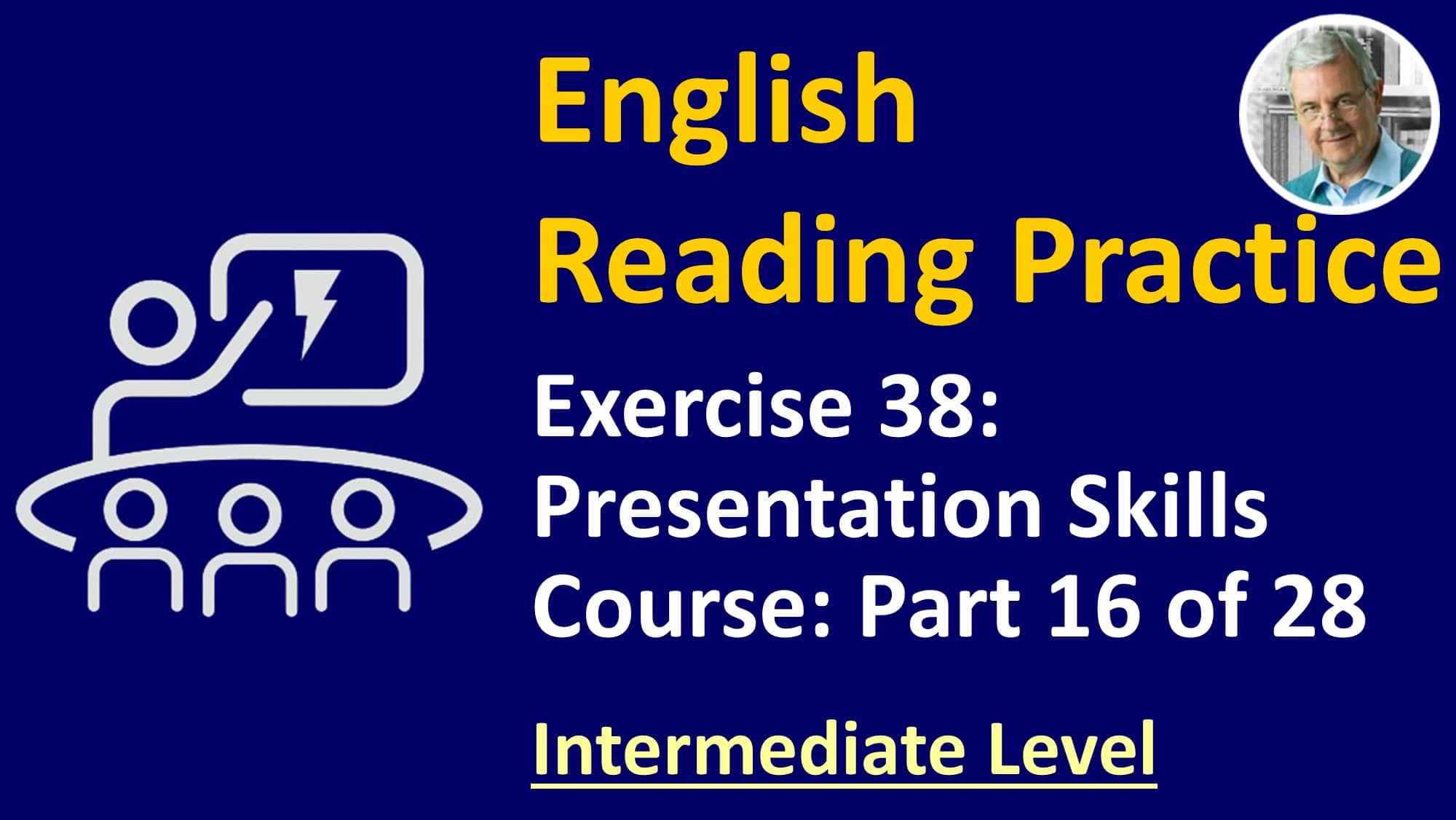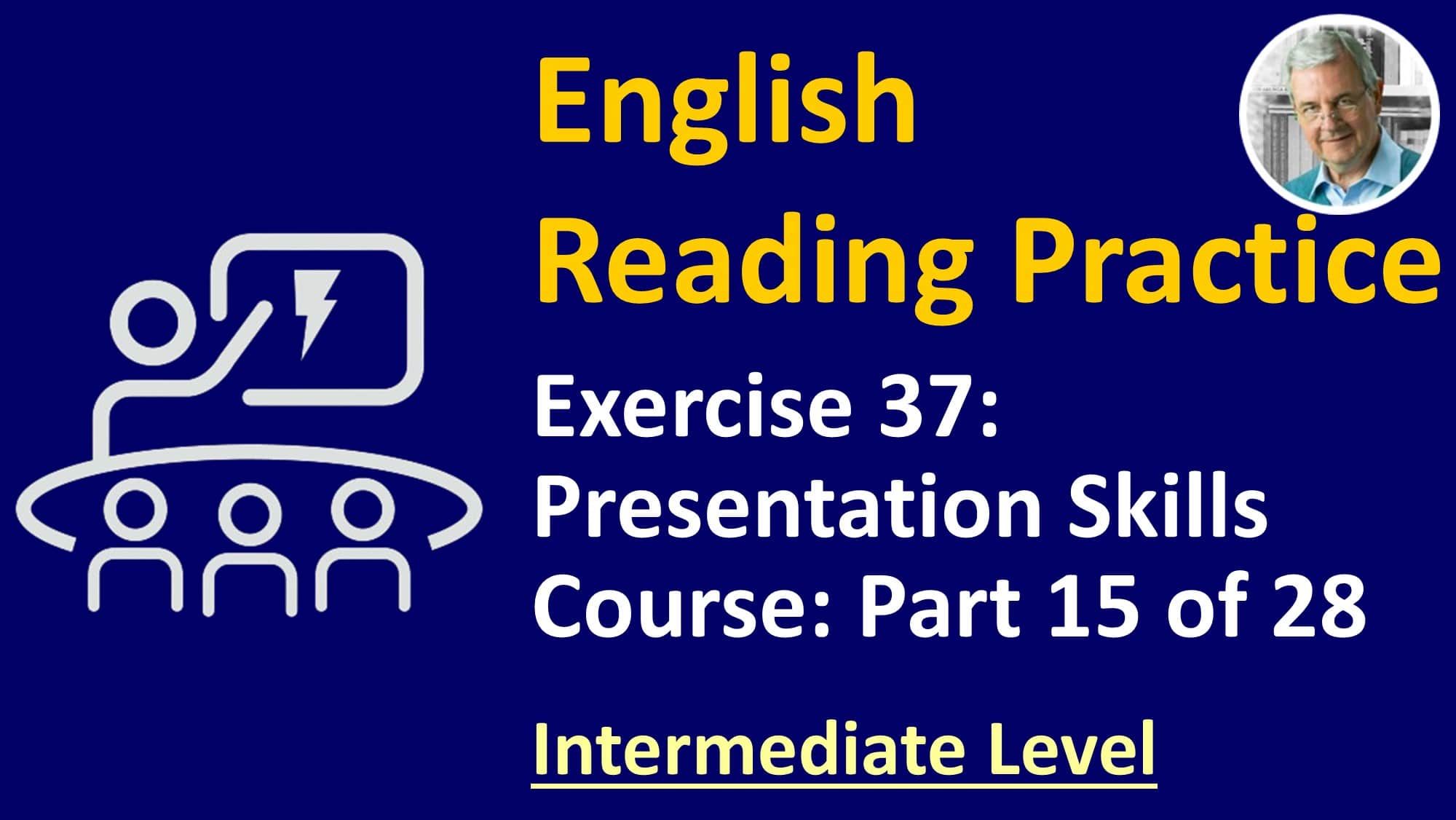ENGLISH Reading Exercise #2 (Intermediate): Mind Maps
English Reading Exercise – Intermediate Level – Exercise 2 (Mind Maps)
If the speed is to slow, click here for the Advanced Version:
English Reading Practice Advanced (Mind Maps)
To improve your English fluency and confidence when speaking, use the Synchronized Reading Method. Be sure to watch the Introduction video in the link above first, to understand the methodology. These English reading practice sessions will dramatically improve your English fluency.
These exercises are designed for intermediate to advanced students who want to sound like a native speaker. By reading along with the teacher at the same time, with the teacher’s voice superimposed over their own, students start to self-correct in the areas of pronunciation and fluency, learning to read and speak in natural word groups.
Here is the transcript for Synchronized English Reading Exercise 2:
Exercise 2:
Mind-Maps & Learning English
Instructions
Turn up the volume so the teacher’s voice is loud.
Read the words in red out loud at the same time as the teacher.
Pay attention to the teacher’s voice intonation and the word groups.
The text:
At this very moment, millions of brain cells inside your head are busy receiving information. Each brain cell has a centre from which radiate branches called dendrites, which can link with dendrites of another brain cell through electrical impulses. “Each of these brain cells looks like a super-octopus, with a central body and tens, hundreds, or thousands, of tentacles.” (1) This basic knowledge of the brain cell can have a huge impact on how we learn and how we teach.
What if we could, in some way, imitate this radiant design in learning/teaching methodology?
Suppose an English language student creates a core group of 5 new words related to a central theme. From those 5 new words synonyms and antonyms are also introduced, along with phrasal verbs and sentences in various tenses. Instead of students laboriously writing down a list of words and phrases, they draw a map imitating the brain cell.
With a sheet of paper in landscape mode, they put the central theme in the middle. Then a branch is created from the centre along which a keyword is written. Sub-branches and lines are drawn out from the main branch containing synonyms, antonyms, and phrasal verbs.
A different colour is used for each branch. Small cartoons, or symbols and drawings are inserted beside some of the words and related words to illustrate their meaning.
This method is often referred to as mind mapping. Mind Maps were formally introduced to the world in the spring of 1974 by the method’s creator, Tony Buzan. In a nutshell he explains: “Rather than starting from the top and working down in sentences or lists, one should start from the centre with the main idea and branch out as dictated by the individual ideas and general form of the central theme.” (2)
Now, using mind mapping, a student can quickly absorb vocabulary at a glance, and with one major advantage. Just as the dendrites in a group of brain cells can link and connect with each other, the student can now easily see connections and co-relationships between keywords and related words. The brain starts to see how various words relate to each other.
As explained by Edward De Bono, a leading authority on thinking skills, “The mind functions to create patterns out of its surroundings. Once the patterns are formed it becomes possible to recognize them, to react to them, to use them.
As the patterns are used they become ever more firmly established.” (3) By regularly reviewing this mind map, or word tree, the mind quickly and easily absorbs new vocabulary, thus firmly establishing new patterns.
The brain eagerly soaks up the lesson depicted in a variety of colours with associated pictures and symbols. What an exciting and enjoyable way to learn! Language study can take on a whole new dimension with students often making rapid progress. Whether in the learning or teaching arena, imitating brain cells can be very powerful.
That is the end of English Reading Exercise #02.
Repeat this exercise many times until you can synchronize your reading with the teacher.
Practice other English reading exercises in this playlist and see a major improvement in your English speaking fluency.
Oh, and by the way, here’s an example of a Mind Map:
Image Credit: Fair Use – British Council
https://learnenglishteens.britishcouncil.org/sites/teens/files/null/mind_map_for_fruit_v2.jpg
References
Books
Tony Buzan with Barry Buzan (1995).
The Mind Map Book. Revised edition 1995. Butler & Tanner Ltd, Frome and London. p.27
Tony Buzan. (1991) Use Both Sides Of Your Brain. Published by Plume, an imprint of Dutton Signet, a division of Penguin Books USA Inc. January 1991. p.93
Edward De Bono. (1990) Lateral Thinking. Reprinted in Penguin Books 1990. p.10
Build a Powerful English Vocabulary and speak English with REAL confidence by enrolling in my FREE English Vocabulary Builder course today!
Go to: http://goodenglish.online





